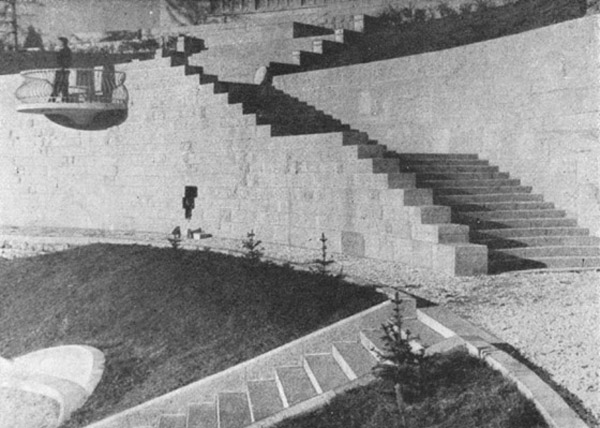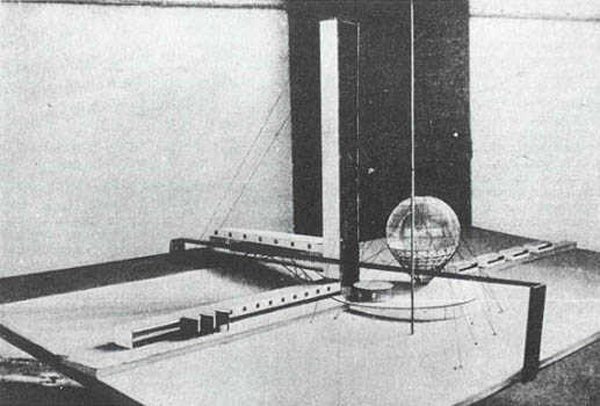Ivan Leonidov and the Russian utopias

Ivan Leonidov lived from 1902 to 1959. He was a constructivist architect, but also a painter, urban planner and a dreamer. From all of his works he only was able to build this staircase on a hillside in Kislovodsk:

From the review of the book Ivan Leonidov, we can quote:
“It is sad that the vast majority of sketchbook plans and competition entries reproduced in this album were never built. Ivan Leonidov was surely one of the most innovative and humanistic architects to come out of early Russian modernism. His Constructivist-inspired projects embody the same revolutionary spirit as Vladimir Tatlin’s celebrated 1919 tower. In his later buildings, medieval Russian motifs mingle with pyramids, amphitheaters, pagodas, to reflect his love of Eastern and classical cultures. Many of his visions were quixotichis United Nations headquarters, for example, or the Island of Flowers park in the Dnepr Riverbut all are inspirational. Vilified in the 1930s, Leonidov has lately undergone a “rehabilitation” in the Soviet Union.”


Palace Proletarian Cultural District. Moscu 1930
From the wiki: “In 1919 Léonidov attended the Svomas free art studios in Tver. From 1921-27 he studied at the VKhUTEMAS in Moscow under the tutelage of Alexander Vesnin at which point his attention switched from painting to architecture. His unexecuted diploma project in 1927 for the Lenin Institute and Library, Moscow, brought him international recognition. The scheme was prominently displayed at the Exhibition of Contemporary Architecture, Moscow, and was published in the OSA Group journal Sovremennaya arkhitektura. He then went on to teach at the VKhUTEMAS between 1928-30. From 1931-33 he worked in the Giprogor and Mossovet and from 1934-41 he joined the studio of Moisei Ginzburg at the People’s Commissariat for heavy industry.”
Lenin Institute and Library:



In the first half of his life, Leonidov’s work quickly became widely known. Even Le Corbusier and Niemeyer had fell under the charm of the strong so-called leonidovskogo “definitive breakthrough”. Then the Soviet coined the term “leonidovschina” and the great architect of the Iron Curtain was isolated from the world of architecture. After the war, Leonidov developed with his sketches some grandiose projects of the utopian City of Sun. The conception of this ideal city began to emerge in Leodinov’s thinking during the thirties. It took shape during the war years, and was inspired by Campanella’s book of that title and the Italian socialista-utopian’s concepts.
This project became Leodinov’s synthesis of the various ideas and artistic concerns of his life and career and also the very real sense of his dream of what future cities might be:


A complete selection of Leodinov’s works can be visited here.
About this entry
You’re currently reading “Ivan Leonidov and the Russian utopias,” an entry on dpr-barcelona
- Published:
- November 9, 2009 / 11:17 am
- Category:
- Architecture, Art, English, History
- Tags:
- Architecture, History, Projects

6 Comments
Jump to comment form | comment rss [?] | trackback uri [?]